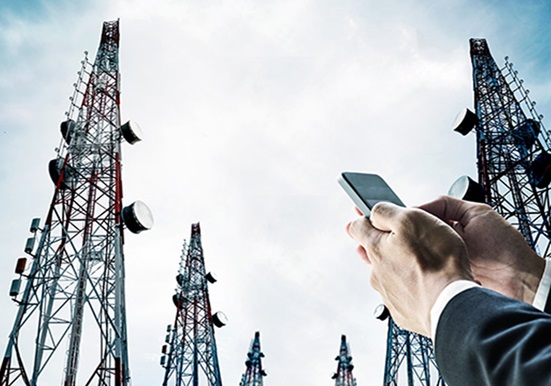(Prelims: Current Affairs)
(Mains, General Studies Paper- 3: Infrastructure: Power, Ports, Roads, Airports, Railways, Communication etc.) |
Reference
World Telecommunication and Information Society Day (WTISD), 2025 was organized by the Department of Telecommunication (DoT) in India on May 17, 2025.

About World Telecommunication and Information Society Day (WTISD), 2025
- What is it: This day is celebrated every year to commemorate the establishment of the International Telecommunication Union (ITU) and the signing of the first International Telegraph Agreement on ‘May 17, 1865’.
- The first International Telegraph Agreement was signed on May 17, 1865.
- World Telecommunication Day was started by ITU in the year 1969.
- Objective: To raise awareness on the opportunities that the use of internet and information and communication technologies (ICT) brings to societies and economies and ways to eliminate the digital divide.
- Theme of 2025: Empowering women through digital technologies
- It focuses on gender equality and digital opportunities for women.
- Importance
- Digital inclusion: Increasing access to internet and communication services to all sections of society
- Gender equality: Providing equal opportunities to women and girls in ICT and digital economy
- Social and economic development: Bringing prosperity to various sectors of society through digital technologies
Achievements of telecom sector in India
India's telecom sector is one of the fastest growing sectors in the world. According to the Telecom Regulatory Authority of India (TRAI), digital inclusion is important to empower all citizens. Internet and broadband connectivity have increased opportunities for education, health, financial services and employment.
Growth in Telephone and Broadband Connections
- Telephone Connections: Total telephone connections in India were 93.3 crores in March 2014, which increased to 118.87 crores by October 2024. Tele-density has increased from 75.23% to 84.49%.
- Urban areas: from 55.52 crore connections in March 2014 to 66.13 crore in October 2024
- Rural areas: from 37.77 crore in March 2014 to 52.73 crore in October 2024
- Internet connections: from 25.15 crore in March 2014 to 96.96 crore in June 2024 (increase of 285.53%)
- Broadband connections: from 6.1 crore in March 2014 to 94.92 crore in August 2024 (increase of 1452%)
Contribution of Digital India
- The Digital India program launched by Prime Minister Narendra Modi on July 1, 2015 is an important step to transform India into a digitally empowered society and knowledge-based economy.
- It has three main pillars-
- Digital Infrastructure: Ensuring digital access for all citizens
- Digital Services: Making government services available online
- Digital Literacy: Training citizens to use digital technologies
Major Government Initiatives of India
- National Broadband Mission (NBM)
- Launched: In the year 2019
- Objective: To ensure equitable access to broadband services for all
- Progress:
- Number of broadband subscribers reached 94.49 crores.
- Length of Optical Fiber Cable (OFC) to be 42.13 lakh km by March 25, 2025.
- NBM 2.0
- Promote satellite broadband in rural and remote areas
- Use of optical ground wire (OPGW) in coordination with Ministry of Power
- Enhance connectivity through 5G and advanced technologies
- BharatNet
- Objective: To provide broadband connectivity in rural India
- Progress:
- Phase I (December 2017): 1 lakh Gram Panchayats connected.
- Phase II: 1.5 lakh additional Gram Panchayats connected through optical fibre, radio, and satellite technologies.
- Revised BharatNet Programme (ABP): Connecting all Gram Panchayats and non-Gram Panchayat villages with optical fibre on demand
- Future plan: Strengthening the network by incorporating 5G technology
- Common Service Centre (CSC)
- Objective: To provide e-governance, health, education and financial services in rural areas
- Progress:
- Connectivity through Wi-Fi access points and FTTH connections under BharatNet
- CSC-SPVs mandated to provide last-mile connectivity in Gram Panchayats
- Impact: Improved access to digital services to rural citizens
- PM-WANI
- Objective: Expanding internet access through public Wi-Fi hotspots
- Progress: 2,78,439 Wi-Fi hotspots installed by March 20, 2025
- Features:
- Hardware availability through Centre for Development of Telematics (C-DOT)
- Collaboration with Public Data Office (PDO)
- Sanchar Saathi
- Objective: Telecom security and fraud prevention
- Features:
- Reporting of suspected fraudulent communications
- Blocking of lost or stolen devices
- Mobile connection management and handset authenticity verification
- Impact: Secure and user-friendly services for over 90 crore smartphone users
Empowerment of women through digital technologies
In line with the theme of the year 2025, the Government of India has launched several initiatives to digitally empower women:
- Mahila e-Haat
- Objective: Online marketing platform for women entrepreneurs
- Management: Ministry of Women and Child Development and Rashtriya Mahila Kosh (RMK)
- Impact: Opportunity for women to showcase their products and become economically empowered
- Pradhan Mantri Gramin Digital Saksharta Abhiyan (PMG-DISHA)
- Launched: February 2017
- Budget: Rs 2351.38 crore
- Objective: To provide digital literacy to 6 crore rural households
- Progress:
- 6.39 crore persons trained.
- 54% of trained and 56% of certified individuals are women
- End date: 31 March 2024
- Impact: Develop digital skills among rural women
- Other Initiatives
- G20 Commitment: Pledge to halve the digital gender gap by 2030
- Digital Public Infrastructure (DPI): Financial inclusion through Direct Benefit Transfer (DBT) and Government-to-Citizen (G2C) payments
- Mahila Helpline (181): Dedicated service for the safety and empowerment of women
Emerging Technologies
- Direct to Mobile (D2M) and 5G Broadcasting
- D2M: Broadcasting of content on mobile devices without internet
- 5G Broadcasting: Seamless content delivery based on ATSC 3.0 and 3GPP standards
- Impact: Improved access to digital content in rural and urban areas
- Augmented and Virtual Reality (AR/VR)
- Uses: Revolutionizing broadcasting, education and entertainment
- Impact: Improving user experience and increasing digital participation
Challenges
- Lack of connectivity in rural and remote areas
- Need to reduce digital literacy and gender gap
- Cyber security and data privacy
Way forward
- Expansion of 5G and satellite technologies
- Focus on digital literacy and skill development
- Inclusive policies for women and disadvantaged communities